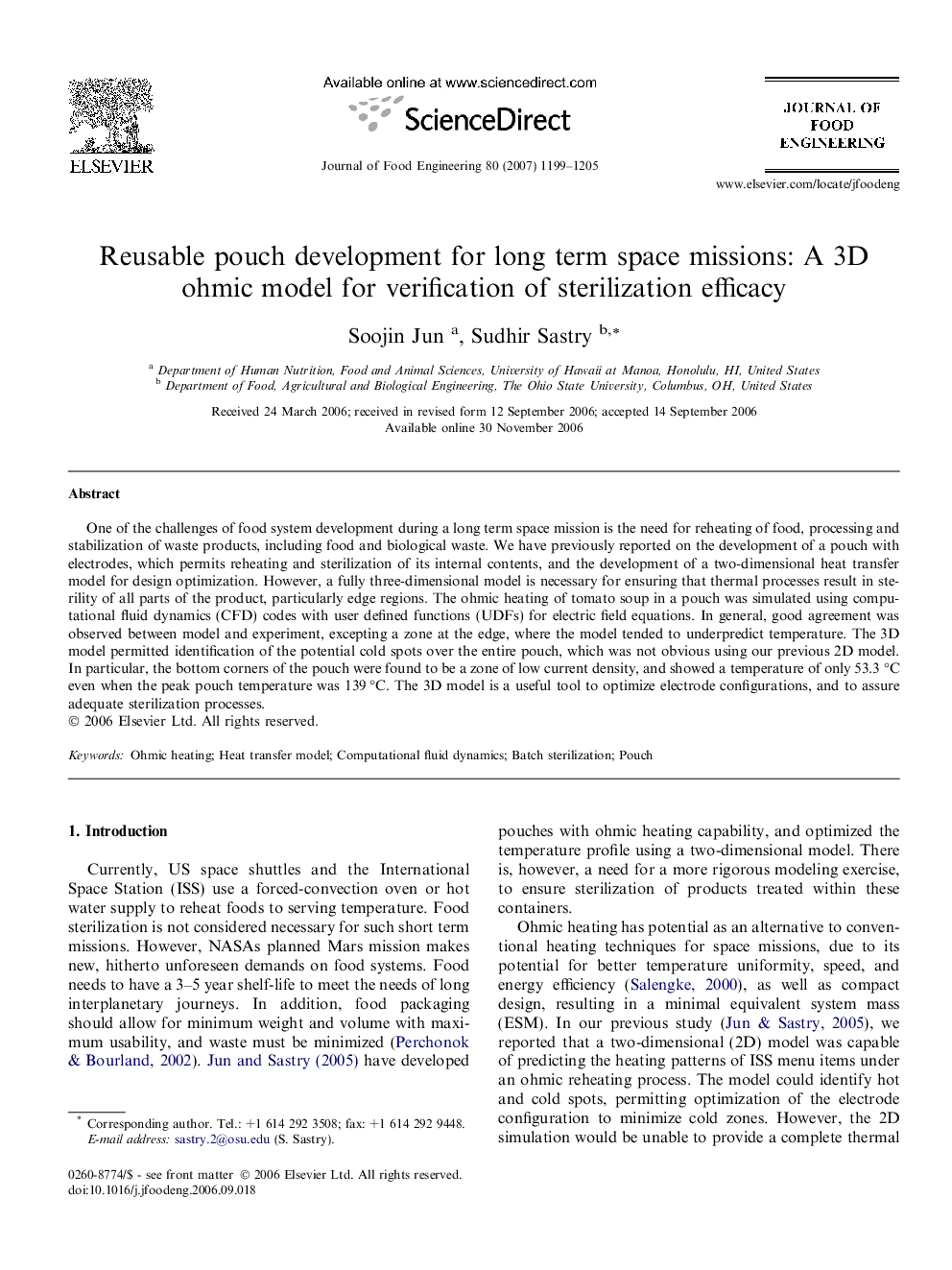| Article ID | Journal | Published Year | Pages | File Type |
|---|---|---|---|---|
| 225786 | Journal of Food Engineering | 2007 | 7 Pages |
One of the challenges of food system development during a long term space mission is the need for reheating of food, processing and stabilization of waste products, including food and biological waste. We have previously reported on the development of a pouch with electrodes, which permits reheating and sterilization of its internal contents, and the development of a two-dimensional heat transfer model for design optimization. However, a fully three-dimensional model is necessary for ensuring that thermal processes result in sterility of all parts of the product, particularly edge regions. The ohmic heating of tomato soup in a pouch was simulated using computational fluid dynamics (CFD) codes with user defined functions (UDFs) for electric field equations. In general, good agreement was observed between model and experiment, excepting a zone at the edge, where the model tended to underpredict temperature. The 3D model permitted identification of the potential cold spots over the entire pouch, which was not obvious using our previous 2D model. In particular, the bottom corners of the pouch were found to be a zone of low current density, and showed a temperature of only 53.3 °C even when the peak pouch temperature was 139 °C. The 3D model is a useful tool to optimize electrode configurations, and to assure adequate sterilization processes.
